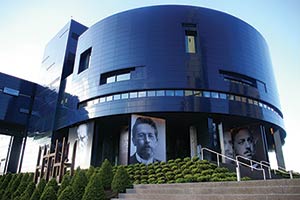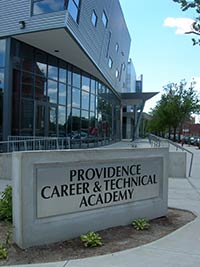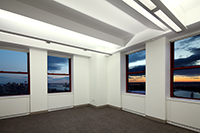view all Case Studies
Guthrie Theater's Software Gets Top Billing in Benefiting Bottom Line

Everyday, nonprofit organizations win grants for social programs to help the poor, or to bring performing arts to rural schools or wells to Africa. But winning a million-dollar grant for demonstrating a stellar maintenance record is not the typical grant award.
March 26, 2013 -
Software
Everyday, nonprofit organizations win grants for social
programs to help the poor, or to bring performing arts to rural schools or
wells to Africa. But winning a million-dollar grant for demonstrating a stellar
maintenance record is not the typical grant award. Yet that’s exactly what the
maintenance team achieved at the venerable Guthrie Theater in Minneapolis.
The theater opened a new facility in 2006, prompting the
maintenance department to revamp operations and replace its overstuffed paper
repair binder with a computerized maintenance management system (CMMS) to
generate work orders and schedule equipment for preventive maintenance (PM).
The CMMS also captures repair data and issued historical reports, showing that
the theater’s equipment was well-maintained.
Organized maintenance and a foolproof 25-year projection on
capital replacements earned the department a million-dollar matching grant
award from the Kresge Foundation to establish a building-reserves fund in 2010.
“Our CMMS gave us a detailed maintenance history, helped us
show how we had kept up proper repairs, and what we would have to replace by
when, eliminating any surprises,” says Dan Soltys, director of facilities.
“That helped us win the grant.”
What began as a 1,441-seat, thrust-stage playhouse has
evolved into a 250,000 square-foot complex on 2.25 acres, complete with three
stages, 2,000 seats, an award-winning restaurant and an express café, more than
a dozen bars, shops on nine levels, and a lobby known for its incomparable
views of the city.
In conjunction with the Guthrie Theater’s expansion, Soltys
invested in Bigfoot CMMS to automate maintenance for nearly every piece of
equipment past the front of the stage, from chillers, boilers, heat pumps, and
air handlers to theater seats, house lights, and drinking fountains. Bigfoot is
a web-based solution that automates asset maintenance operations with
capabilities that include PM scheduling, ad hoc work order and repair
scheduling, history and analysis reporting, and asset-life-cycle management.
“Before Bigfoot, we handled maintenance with a three-ring
binder,” says Soltys, who is responsible for infrastructure, engineering,
security and cleaning. “We would only change a filter when it was plugged up
and because we hadn’t changed it in six months. We were relying on memory.”
Today, 343 pieces of equipment are scheduled for maintenance
on the software’s PM calendar, which reminds his team to grease a bearing or
change a filter. If the controls of an air handler need to be checked, Bigfoot
issues a work order and sends an e-mail to the assigned technician, who then
notifies Soltys through Bigfoot when the task is complete.
Soltys marks Bigfoot’s work-order-management page and
updates the department’s history log book. If a vendor replaces an expensive
part and invoices the theater, Soltys can dispute the charge with access to the
digitized warranty in Bigfoot. Soltys also uses Bigfoot’s “Miscellaneous” page
and makes up work orders for ad hoc repairs, such as changing the battery on a
forklift or fixing a broken office chair.
“Except for a blizzard in 2010 that forced us to close the
theater for one evening, we’ve never missed a performance,” Soltys said.
“Likewise, when it’s 90 degrees outside, I can’t go to the C.A.O. and tell him
we won’t have air conditioning tonight. The show must go on. Bigfoot is my
insurance against failed equipment and unhappy patrons.”
Next
Read next on FacilitiesNet












